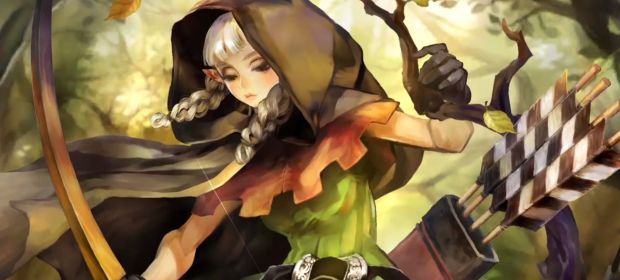Everything about Dragon’s Crown is exaggerated. Bosoms and bottoms bounce, muscles bulge grotesquely, gleaming armour weighs an absolute ton and weapons are deliberately drawn too big to be effectively wielded in battle. It all combines to create a very particular ambience, to evoke a certain mood as you play that fits perfectly and completely with the style of game that Dragon’s Crown is. Is some of the more risqué imagery outmoded? Maybe. In poor taste? Quite definitely. Actually sexist? Not really – although it’s fair to say that the barely-covered charms of the Amazon and Sorceress are more than ample, and their outfits are hardly conducive to adventuring through underground tombs and dark forests.
Still, Dragon’s Crown is intended to be fun, above all else, and it largely succeeds. To call it unique would be straying too close to hyperbole, but Vanillaware’s game is certainly… different. It’s like the Borderlands of the side-scrolling Brawler genre, staying 75% true to the simple roots of its heritage but adding colour here and there with splashes of RPG goodness. First of all, there’s the setting. A quintessential fantasy world complete with all the trappings thereof, from elves and dwarves to dragons and wizards, Hydeland is the ideal playground for our cadre of intrepid adventurers.
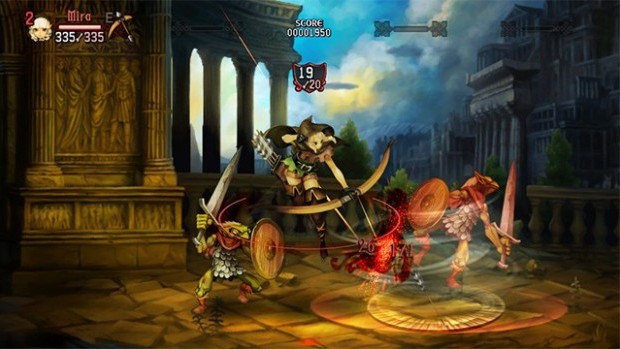
The plot revolves around the titular Dragon’s Crown, an ancient artefact over which men and King’s have warred for countless years. Contracted by the stand-in King, the six protagonists are presented as the industry-standard swords for hire (or bows for hire, staves for hire… you get the picture), initially chosen for their skills with killing first and asking questions later but soon drawn into the heart of a terrible and timeless conflict that will decide the fate of Hydeland and the rest of the world.
It’s nothing particularly new or original, and the minor twists here and there are never really enough to make it all that exciting but, as with all fantasy RPGs, the main story is only part of the package. You could opt to simply ignore it, although if you’re not advancing the story, you’re not unlocking side-quests and there really isn’t much point in grinding (you’ll level up quickly enough just working through the missions).
I should clarify that this is not an RPG in the traditional sense. It’s very much a brawler with RPG elements and, as such, is more about killing stuff very quickly than refining your character. That said, each of the six playable classes come with two skill trees, one that’s universal to all and one that’s unique to the individual. While they’re not huge, they do offer a decent amount of scope for different builds such as support and DPS (damage per second), and it’s likely that you’ll see plenty of theory-crafting in the forums. The skill tree is presented as a Tarot deck, wherein each card selected has a skill or passive buff attached that can be levelled up. The Fighter, for example, can unlock a skill that lets him shield all of his allies while he blocks, whereas another allows him to generate extra threat and draw all the enemies towards him.
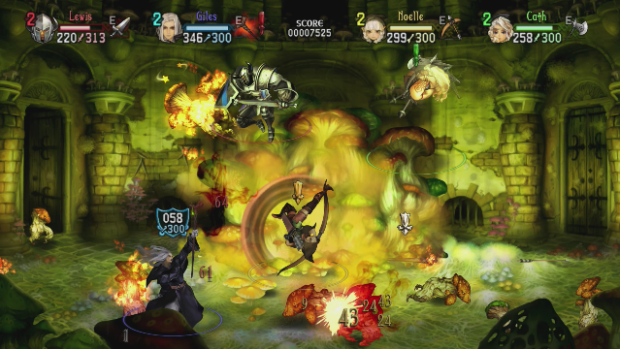
There is a great diversity in the characters, too. The Fighter, Dwarf and Amazon are the melee classes, presenting a good variety of styles from the Fighter’s slow yet powerful assaults, to the Dwarf’s manic, dual-wielding onslaughts. On the flip-side you’ve got the Elf, whose bow deals ranged damage and can only kick her enemies if they get too close; or the Sorceress and Wizard, whose weak physicality is well compensated for by their devastating magical attacks. Characters can be named and the colours can be played with, but there’s little customisation beyond that.
Since adventuring is a team sport, you’ll always have the option of taking a party out with you, controlled either by other players or the AI. If it’s the latter, you select your group from the resurrected heroes whose bones you find scattered around the various dungeons. For a small price you can take them to the temple in the town hub and either bury them (which may result in you receiving a free item) or bring them back to life to serve you.
You can have up to three allies at any time, allowing you to build a diverse team to conquer any challenge the game throws at you, but be warned: the character models are hardly svelte, and it’s very easy to lose your hero as the screen is swamped by special effects, gleaming blades, piling corpses, and heaving bosoms. At times I completely lost track of my fighter despite him being the biggest guy on-screen, and my Sorceress spent a fair amount of time launching fireballs in the wrong direction because I couldn’t always see which way she was facing. To be honest, there isn’t a great deal of difference between playing with people or playing with bots, and once you’ve built up enough money you’ll be able to resurrect anyone who dies over and over again without any fear of real failure. It does remove a lot of the challenge, but there is a higher difficulty unlockable once you finish the game.
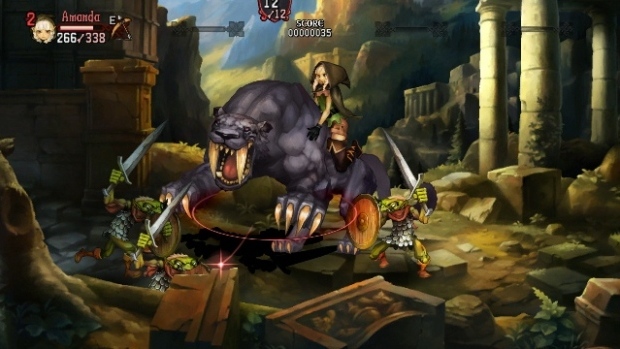
Accompanying you on your jaunts into the monster-infested unknown are two permanent allies who you don’t get to customise or directly control. The first is Rannie the thief, whose skills with locks and careless pockets are invaluable in the shadows. Moving the right stick (or touching the screen in the Vita version) manipulates a hand-shaped cursor that you use either to find hidden artefacts in each area, or to instruct Rannie. Clicking or tapping on a treasure chest or a locked door will see him go to work on the lock, or alternatively he’ll occasionally sneak around an area and gather up all the loot you missed.
The other ally is a fairy you’ll meet early on, whose magic allows you to activate hidden Runes inscribed on certain walls. These Runes, when combined in the right order with one or more Runestones in your own personal collection, activate temporary buffs that influence anyone in the vicinity. They’re handy, but not essential, and serve as yet another reminder that Dragon’s Crown is anything but a simple brawler.
Most of the action takes place in and around 9 re-used locations, including a crumbling old fortress and a flooded dungeon, reachable from the world map. The world map itself is accessed from the town hub, which contains several shops, the Adventurer’s Guild where you go to level up and accept side-quests, the Castle, temple and stables. Mounts are only usable inside levels, and evoke memories of Golden Axe by pure dint of how the beasts move beneath your chosen hero. They add a few attacks of their own and mix up the common combat, but rarely last very long before they hit the deck like a cold Tauntaun and you’re back on foot again.
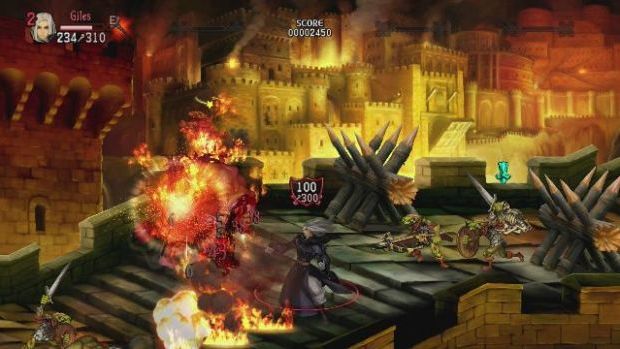
It’s a shame that there are so few locations, as each one is beautifully drawn and wonderfully atmospheric. There are secret paths and hidden doors dotted throughout, and the bite-sized nature of most quests means that you won’t waste much time going off the beaten path to explore. While you’re comboing enemies to bloody pulps you may occasionally destroy a breakable wall or remove a stack of crates or some such to reveal a secret exit to an area that may or may not be trapped, but will usually contain treasure or loot of some kind.
Mostly, loot will be weapons and trinkets that increase various attributes, but the system is such that you won’t know what you’ve picked up until you return to town and have it appraised. You can’t access your inventory or change gear in the field, so you’ll need to set your hotkeys and repair your equipment between each mission or risk trying to face off against a family of dragons with only your gauntleted hands.
Aesthetically, Dragon’s Crown is striking. Jiggly-bits aside, the character models are gorgeous; everything is over-sized and well-detailed, and the caricature-nature of the art style lends each hero and enemy its own unique personality. The visuals seem to be shooting for homage rather than titillation, deliberately evoking memories of the book covers for novels like Robert E. Howard’s Conan series, or any number of Fantasy Art almanac’s detailing the traditional stylings of prolific fantasy artists from the last twenty or thirty years.
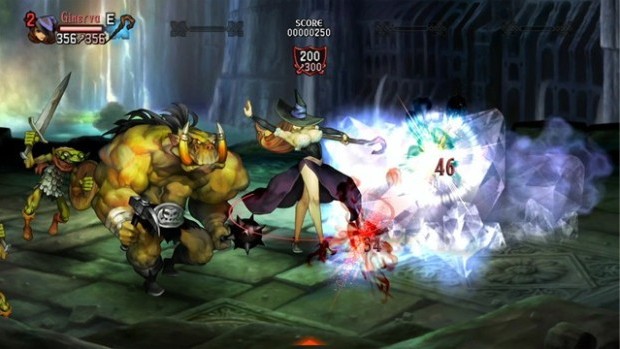
On the Vita’s smaller screen, the graphics are even more appealing and, in fact, almost give the impression that Dragon’s Crown is better suited to life on Sony’s handheld. The sound is similarly fitting on either version, with rousing, heroic music accompanying the grunts and brays of adventurer and monster, and the voice-work and narration are knowingly hammy but competently delivered.
VERDICT: Dragon’s Crown is big and brash and silly, and owes as much to the fantasy RPGs of the world as it does to the side-scrolling brawlers. Some will find it difficult to look past the character design, and it’s understandable why, but those that can will discover an addictive, enjoyable adventure game that doesn’t take itself too seriously but still manages to marry quality design with compelling playability.

VERY GOOD. An 8/10 is only awarded to a game we consider truly worthy of your hard-earned cash. This game is only held back by a smattering of minor or middling issues and comes highly recommended.


